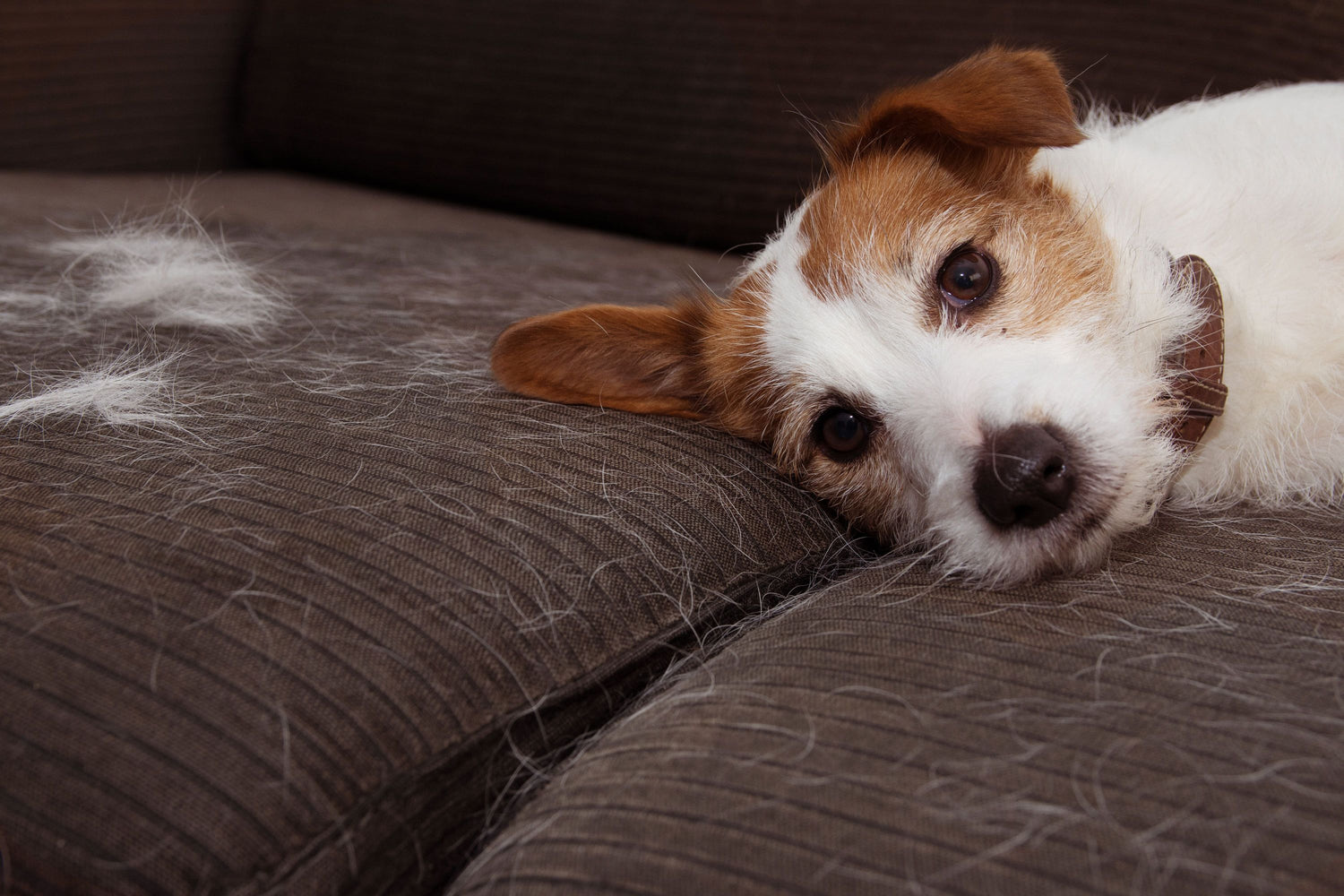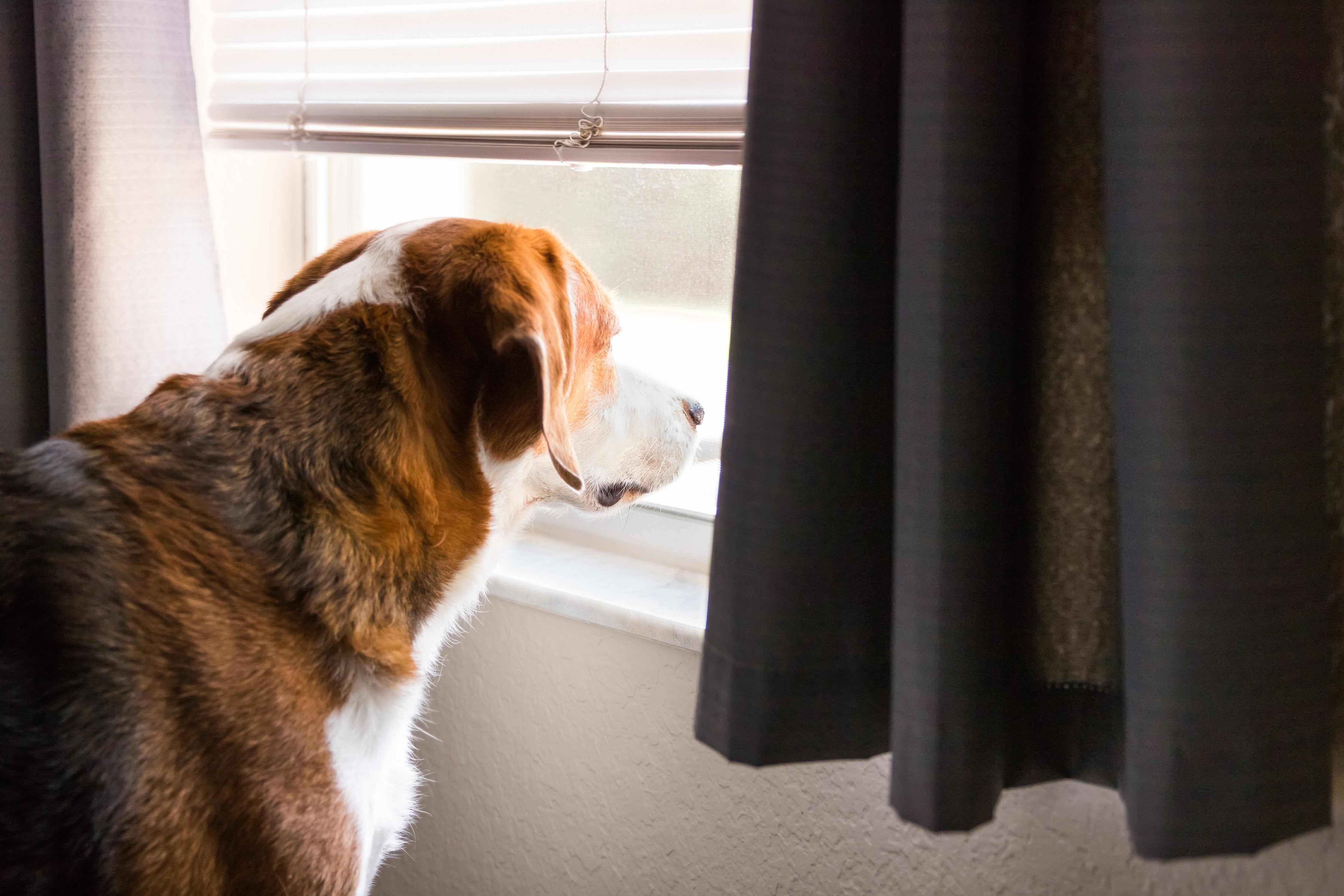The short answer is your dog may shed more during the summer, but it depends on many factors. Fur type, local climate, seasonal skin irritation, and grooming habits all play a part in how much fur you may find on your floors. Although you can’t stop the natural shedding process, there are some things you can do.
Single vs Double Coat
The main factor that plays a role in summer shedding and how much you notice it all depends on what type of fur your dog has. Coat type can get categorized into two main groups: single and double. Within those two coat types are many categories such as long hair, short hair, smooth, curly, etc. Whether your dog has a single or double coat plays a factor in if you will experience a shedding season or if there will be a more subtle shedding throughout the year.
Single-coated dogs only have one layer of fur, whereas double-coated dogs have two layers, a top and an undercoat. This distinction is important to remember because it plays a role in whether you will notice more shedding depending on the season. Single-coated dogs like boxers or chihuahuas tend to have a more steady rate of fur loss throughout the year. On the other hand, double-coated dogs, like golden retrievers or Siberian huskies, tend to shed more around seasonal changes.

So what does it mean to have a double-coat? Double-coated dogs, like mentioned above, have a top coat and an undercoat. The undercoat acts as insulation, and to your surprise, this insulation helps to regulate body temperature and isn’t necessarily for keeping warm. Although the second coat allows them to regulate their body temperature, they will naturally begin to shed their undercoat before summer begins. This shedding can keep them feeling cooler and have less weight. Some dogs also will shed their coats in preparation to grow a fresh, new undercoat for the winter months. Depending on the climate that you live in, you may also notice that your dog might not shed their double coat in the way you expect.
How to Reduce Shedding
Now that you know the difference between a single and a double coat, you are probably eager to learn how to reduce the number of furballs you are vacuuming. While nothing will stop your dog from shedding, maintaining a regular grooming routine and even adding in a regular de-shed service can help you reclaim your time and the cleanliness of your home.
You may be tempted to shave your dog during shedding season, but please don’t do this. Complete shaving of certain breeds should only be done by professionals under certain circumstances. This is especially true for double-coated dogs because their outer coat is essential for protecting their skin from sun damage, sunburns, and also helps them to regulate their body temperature and stay cool.
Investing in some at-home grooming tools such as a good, high-volume hair dryer and an undercoat rake will also help you to decrease the amount of shedding fur found around your house.

CBD for Shedding
Besides regular grooming and deshedding services, you can incorporate CBD and hemp-infused products into your routine to help combat shedding. As you know, many factors contribute to the amount of shedding you may experience. These factors may include but are not limited to seasonal allergies, skin irritations, and hot spots, which can all contribute to excess shedding. Using products high in essential vitamins and Omega-3 fatty acids such as our Anti-Shedding & Detangling Shampoo or our Advanced Moisturizing Shampoo can help protect and nourish your dog’s skin and coat, especially during the summer months. Our Advanced Moisturizing Shampoo has a fatty acid complex exclusive to adult hemp plant extracts. This complex closely mimics the fur and skin's natural lipid structure, which neutralizes the damaging effects of dehydration, daily exposure and free radical damage. Our Anti-Shedding & Detangling Shampoo restores the fur’s natural electric charge to prevent static while creating a smoother surface to release tangles for easier brushing. Other preventative measures you can take would include boosting your dog's intake of antioxidants. Antioxidants are proven to help reduce cellular damage, and continued use can help to support a healthy immune system.
CBD is also great for regulating inflammation levels and maintaining lower stress levels in your dog. Inflammation of the skin or within the body can cause an excess of shedding. Cannabinoids, in this case, cannabidiol (CBD), have the potential to interact with the endocannabinoid receptors located in the central and peripheral nervous systems, which help maintain balance in the body and keep it in a normal healthy state. Higher stress levels, or cortisol, in your pup may also be an underlying cause of excess shedding. CBD products such as our CBD Soft Chews address both inflammation and a sense of relaxation. As always, your first step should be to consult your veterinarian, but adding CBD and hemp-infused products to your dog’s daily routine could improve their overall health, and you could see improvement in their shedding.

Although you can’t eliminate shedding, there are steps that you can take to help both you and your dog feel more comfortable during higher shedding seasons. Regular grooming, a healthy diet, understanding your dog’s fur type, and preventative measures such as CBD and hemp-infused products are all things you can do to make your dog feel its best. As always, when starting any new treatment, it's important that you consult your vet first and rule out any underlying factors or causes of shedding, especially if it seems irregular or extreme.



